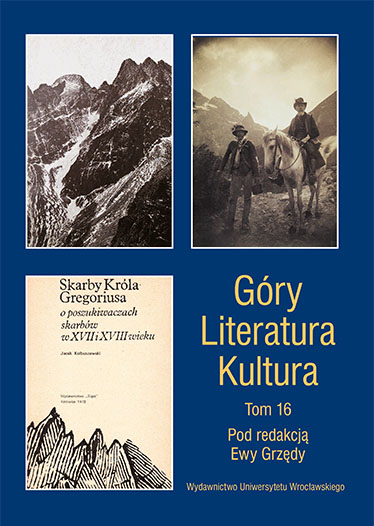

Artykuły

The article is a continuation of the analysis begun in the previous (15th) volume of Góry – Literatura – Kultura and dealing with the image of the mountain guide. In the second part the author discusses the earliest high mountain expeditions in the history of Tatra tourism, which were led by more or less experienced guides. The history of the profession in the Tatras goes back to the 17th century. One of the first people to employ a professional guide was a man named Simplicissimus (1654) — this was for a three-day high mountain trek. Among the subsequent expeditions, one of the biggest was a scientific expedition organised by Robert Townson (1793), who made an ascent of Łomnica, guided by Hans Gross.
Attempts to create an ideal image of the mountain guide were made in the first mountain guidebooks by Baltazar Hacquet, Eugeniusz Janota or Walery Eljasz. When the Tatra Society was established in 1873, it concluded that one of the most urgent matters to solve was the question of providing care for guides. It was to be regulated by a newly drafted statute, which created an organisational framework for the guiding profession, as a consequence of which guides were divided into three categories in accordance with their qualifi cations. A breakthrough in mountain tourism came in 1874, when Dr Tytus Chałubiński arrived in Zakopane and began his original “itinerary-less trips”, which lasted a few days. The numerous participants in these trips were led by the best guides. This irreverent way in which an elite group usurped the services of guides particularly experienced in mountain guiding provoked a heated discussion within the tourist community, which raged in the press at the time.